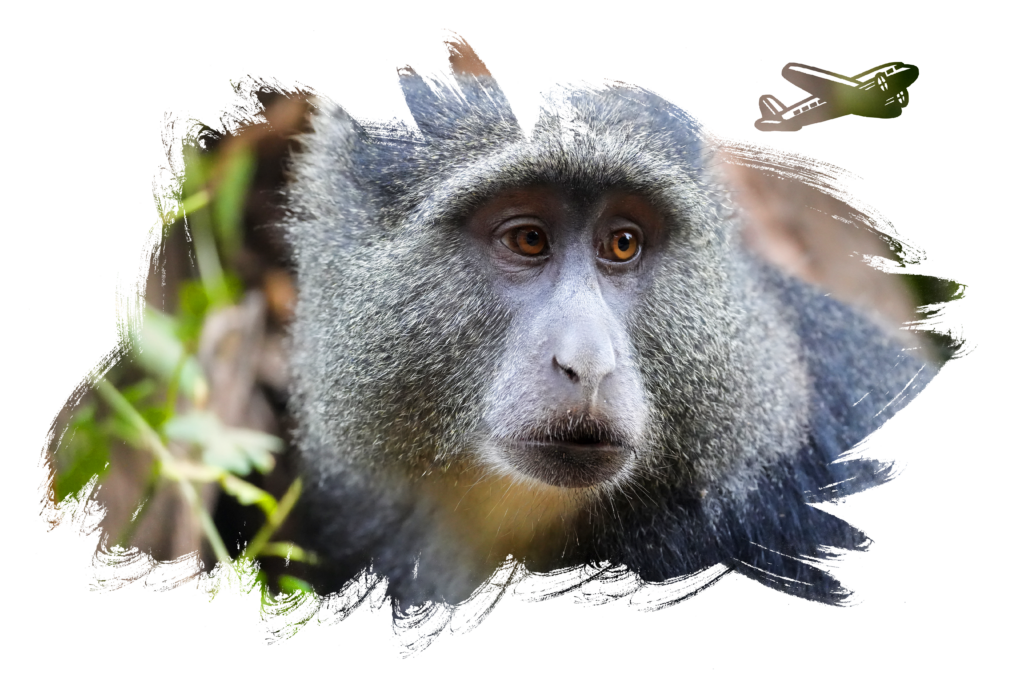Plan the Ultimate Serengeti Adventure
The best time to visit Serengeti National Park
Are you ready for the adventure of a lifetime in the breathtaking Serengeti National Park? Planning the best time to visit Serengeti National Park for your ultimate Serengeti adventure begins with choosing the perfect season to visit, ensuring you witness the awe-inspiring wildlife and natural wonders this iconic destination has to offer. With its diverse range of landscapes, including vast plains, dramatic rock formations, and dense woodlands, the Serengeti never fails to captivate.
Throughout the year, this remarkable ecosystem transforms with the changing seasons, presenting unique opportunities for wildlife encounters and witnessing the world-famous Great Migration. Whether you dream of spotting lions, elephants, or cheetahs in their natural habitat, or wish to experience the thundering sounds of hooves as millions of wildebeest cross the Mara River, timing your adventure is crucial.
In this article, Key2Africa Safaris we will guide you through the best time to visit Serengeti National Park and the different seasons in the Serengeti, highlighting the distinct experiences and highlights of each. Whether you prefer the vibrant green landscapes of the wet season, the action-packed drama of the dry season, or the serene beauty of the shoulder seasons, we’ll help you choose the perfect time to embark on your Serengeti adventure. Get ready for an unforgettable journey into one of the world’s most magnificent wildernesses.


Understanding the seasons in the Serengeti
The Serengeti experiences four distinct seasons throughout the year, each offering a unique experience for visitors. Understanding the characteristics of each season will help you decide when to plan your adventure.
Dry Season: The dry season, which runs from June to October, is considered the peak time to visit the Serengeti. During this period, the vegetation thins out, making it easier to spot wildlife. The lack of rainfall also means that animals congregate around water sources, providing excellent opportunities for sightings. The weather is generally warm and sunny during the day, with cooler temperatures at night. This season is perfect for those seeking exciting wildlife encounters and witnessing the Great Migration.
Wet Season: The wet season in the Serengeti occurs from November to May, with the heaviest rainfall usually falling between March and May. While the wet season may not be as popular as the dry season, it offers a unique experience for visitors. The landscape transforms into a lush, vibrant green, creating a stunning backdrop for wildlife photography. The wet season also brings the birth of thousands of wildebeest calves, adding to the already abundant wildlife population. However, it’s important to note that some roads may become impassable due to heavy rainfall, limiting accessibility to certain areas of the park.
Shoulder Seasons: The shoulder seasons, which fall between the dry and wet seasons, are considered the transitional periods in the Serengeti. From November to December and April to May, these seasons offer a combination of both dry and wet conditions. The weather is generally pleasant, with fewer crowds compared to the peak season. The shoulder seasons present a great opportunity to witness the changing landscapes and observe the wildlife in a more relaxed setting.
The great migration: A highlight of the Serengeti
One of the most incredible natural spectacles on the planet, the Great Migration, is a must-see event for any visitor to the Serengeti. This annual migration involves millions of wildebeest, zebras, and other herbivores as they journey across the Serengeti in search of fresh grazing lands. The Great Migration is a true testament to the circle of life, as it attracts numerous predators, including lions, cheetahs, and crocodiles.
The timing of the Great Migration varies each year, as it is influenced by rainfall patterns and the availability of food. However, there are general trends that can help you plan your visit to witness this incredible phenomenon. From December to March, the herds can be found in the southern Serengeti, where they give birth to their young. As the dry season progresses, the herds gradually move northwards, reaching the western corridor around May and June. By July, they make their way to the northern Serengeti, where they cross the Mara River, risking encounters with crocodiles. From August to September, the herds move into Kenya’s Masai Mara before returning to the Serengeti around October.
Witnessing the Great Migration is a once-in-a-lifetime experience, and planning your visit during the appropriate season will ensure you don’t miss out on this incredible natural spectacle.
Best time to visit for wildlife sightings
If your primary goal is to witness the diverse wildlife of the Serengeti, timing your visit during the dry season is highly recommended. With the thinning vegetation and animals congregating around water sources, your chances of spotting the “Big Five” – lions, elephants, buffalos, leopards, and rhinos – are greatly increased. Additionally, the dry season offers excellent opportunities for birdwatching, as many migratory bird species visit the Serengeti during this time.
However, if you are interested in specific wildlife sightings, it’s important to note that different seasons offer unique opportunities. For example, if you wish to see newborn wildebeest calves, visiting during the wet season from January to February is ideal. The calving season attracts predators, providing thrilling wildlife encounters. If you’re a fan of big cats, visiting during the dry season offers better chances of spotting lions, cheetahs, and leopards, as they tend to be more active during this time.
Weather Considerations for the Serengeti
The weather in the Serengeti varies depending on the season, and it’s important to consider the climate when planning your visit. The dry season is characterized by warm and sunny days, with temperatures ranging from 25 to 30 degrees Celsius (77 to 86 degrees Fahrenheit). However, nights can be cooler, with temperatures dropping to around 15 degrees Celsius (59 degrees Fahrenheit). It’s advisable to pack lightweight clothing for the day and warmer layers for the evenings.
During the wet season, rainfall is more frequent, and temperatures are slightly cooler. Daytime temperatures range from 20 to 25 degrees Celsius (68 to 77 degrees Fahrenheit), while nighttime temperatures can drop to around 10 degrees Celsius (50 degrees Fahrenheit). It’s essential to pack rain gear and waterproof clothing during this season, as showers can be unpredictable.
The shoulder seasons offer a pleasant climate, with temperatures similar to those in the dry season. However, it’s worth noting that weather patterns can be more unpredictable during these transitional periods, so it’s advisable to pack a mix of clothing suitable for both warm and cooler conditions.
Accommodation options in the Serengeti
When planning your Serengeti adventure, choosing the right accommodation is crucial for a comfortable and enjoyable stay. The Serengeti offers a wide range of accommodation options, catering to different budgets and preferences.
Luxury lodges and tented camps provide an immersive and luxurious experience, with spacious rooms, exquisite dining options, and personalized service. These accommodations often offer guided game drives and other activities, ensuring you make the most of your time in the Serengeti.
Mid-range lodges and tented camps provide comfortable and well-equipped accommodations at a more affordable price. These options still offer excellent service and amenities, allowing you to enjoy a memorable stay without breaking the bank.
For budget-conscious travelers, there are also campsites available within the Serengeti. These campsites provide basic facilities and allow you to experience the wilderness up close. Keep in mind that advanced booking is essential, as campsites tend to fill up quickly, especially during peak seasons.
Activities and attractions in the Serengeti
In addition to wildlife encounters, the Serengeti offers a range of activities and attractions to enhance your adventure. Here are some highlights to consider when planning your itinerary:
Guided Game Drives: Explore the Serengeti’s vast plains and witness the incredible wildlife on a guided game drive. Experienced guides will take you to the best spots for sightings, ensuring an unforgettable experience.
Balloon Safaris: For a truly unique perspective of the Serengeti, consider taking a hot air balloon safari. Drift above the plains at sunrise and witness the breathtaking landscapes and wildlife from the air.
Cultural Experiences: Immerse yourself in the local culture by visiting Maasai villages and learning about their traditions and way of life. Engage in traditional dances, visit local markets, and gain a deeper understanding of the Serengeti’s rich cultural heritage.
Walking Safaris: Embark on a walking safari and get up close and personal with the Serengeti’s flora and fauna. Led by knowledgeable guides, walking safaris offer a more intimate and immersive experience in the wilderness.
Photography Workshops: If you’re passionate about photography, consider joining a photography workshop in the Serengeti. Learn from professionals and capture stunning images of the wildlife and landscapes.
Conclusion: Unforgettable experiences in the Serengeti
The Serengeti National Park offers an unparalleled opportunity to witness the wonders of nature in all its glory. From the breathtaking landscapes to the incredible wildlife encounters, a Serengeti adventure is sure to leave you with memories that will last a lifetime.
By understanding the different seasons and their characteristics, you can choose the perfect time to visit, whether you prefer the vibrant greenery of the wet season, the action-packed drama of the dry season, or the tranquil beauty of the shoulder seasons. Plan in advance, consider your interests and priorities, and make the most of your time in this magnificent wilderness.




